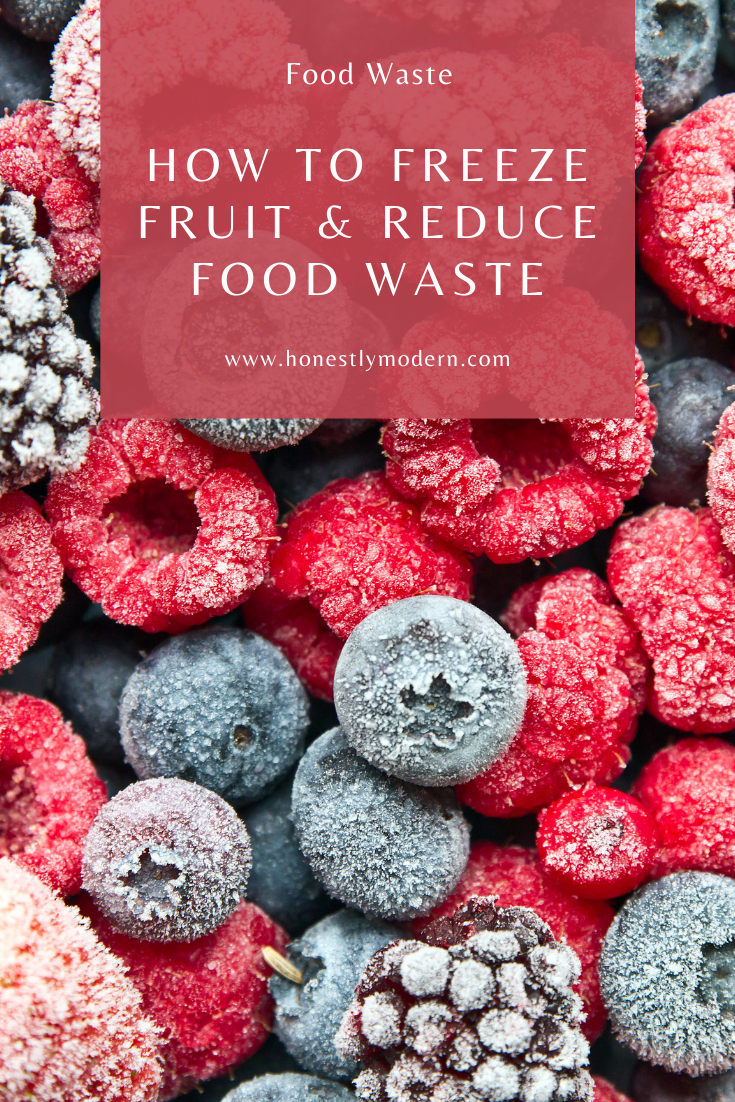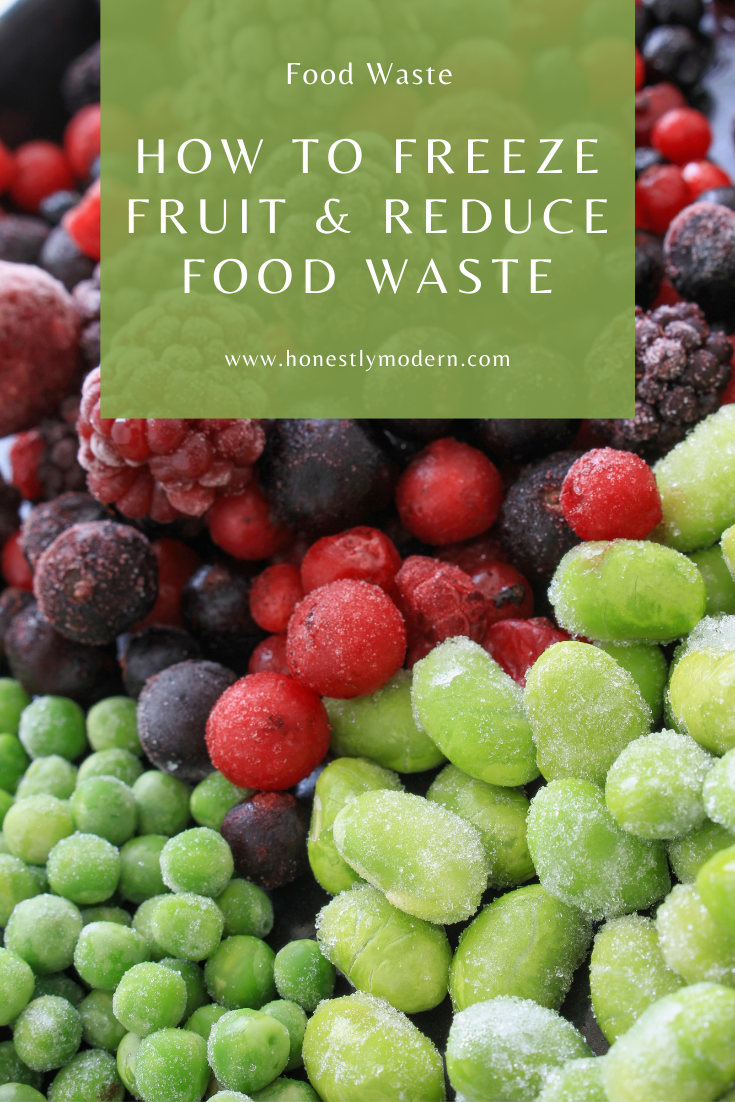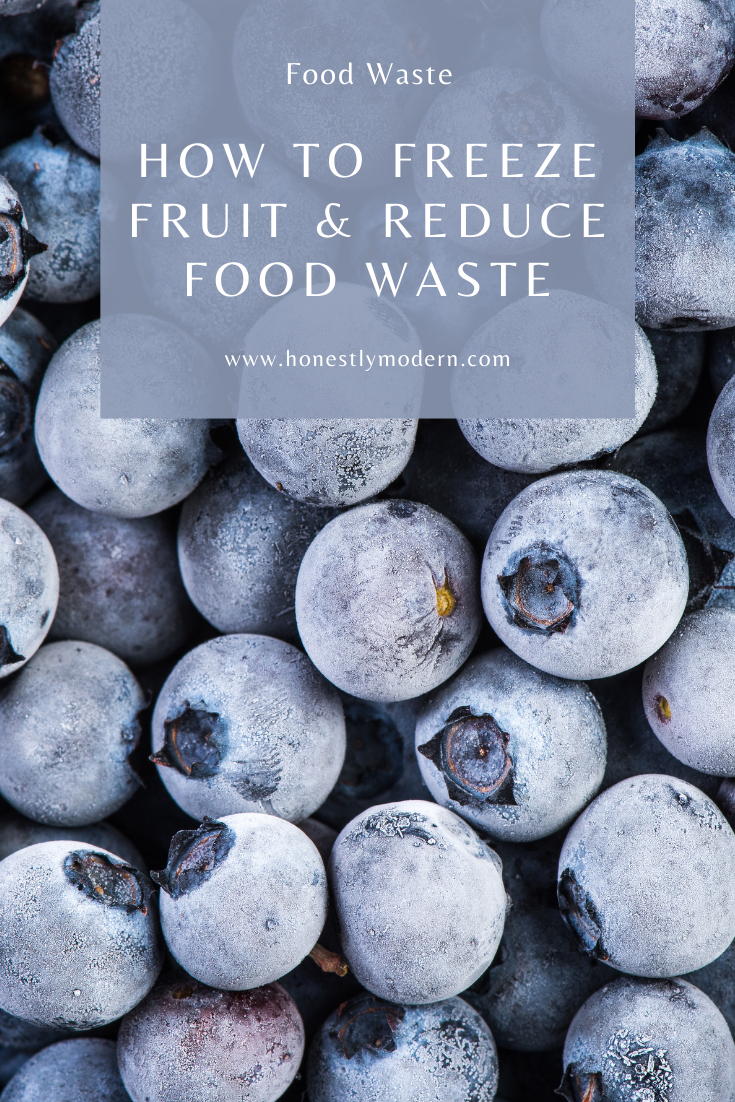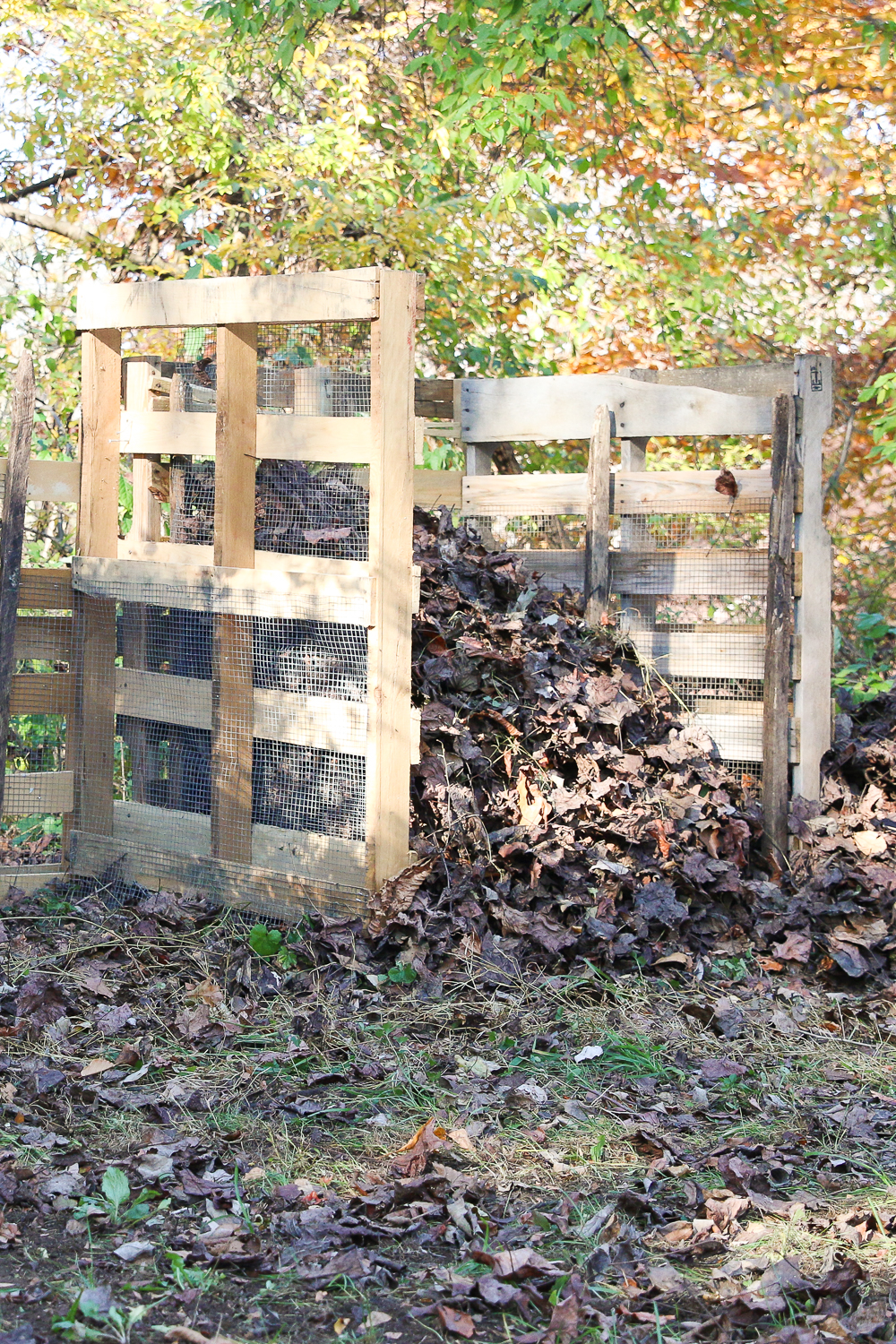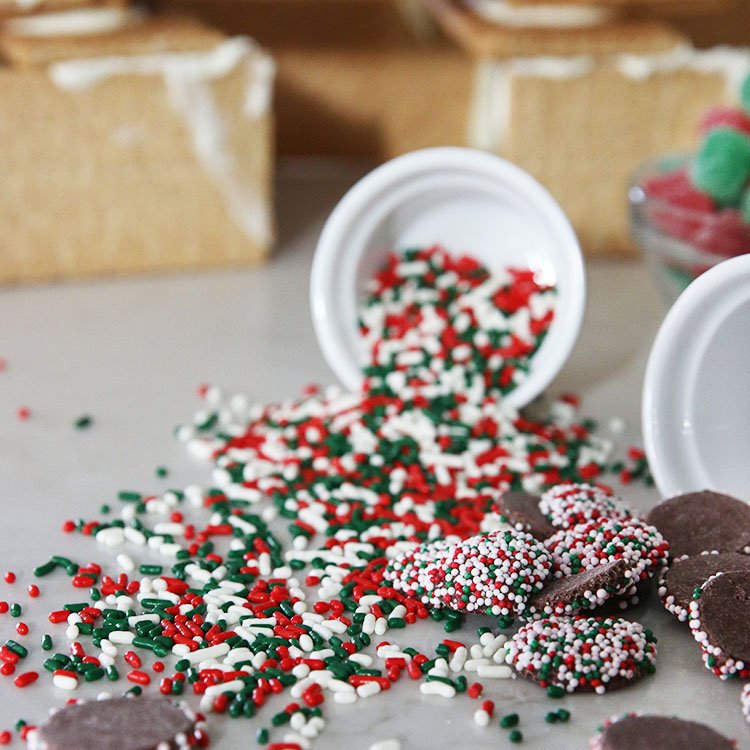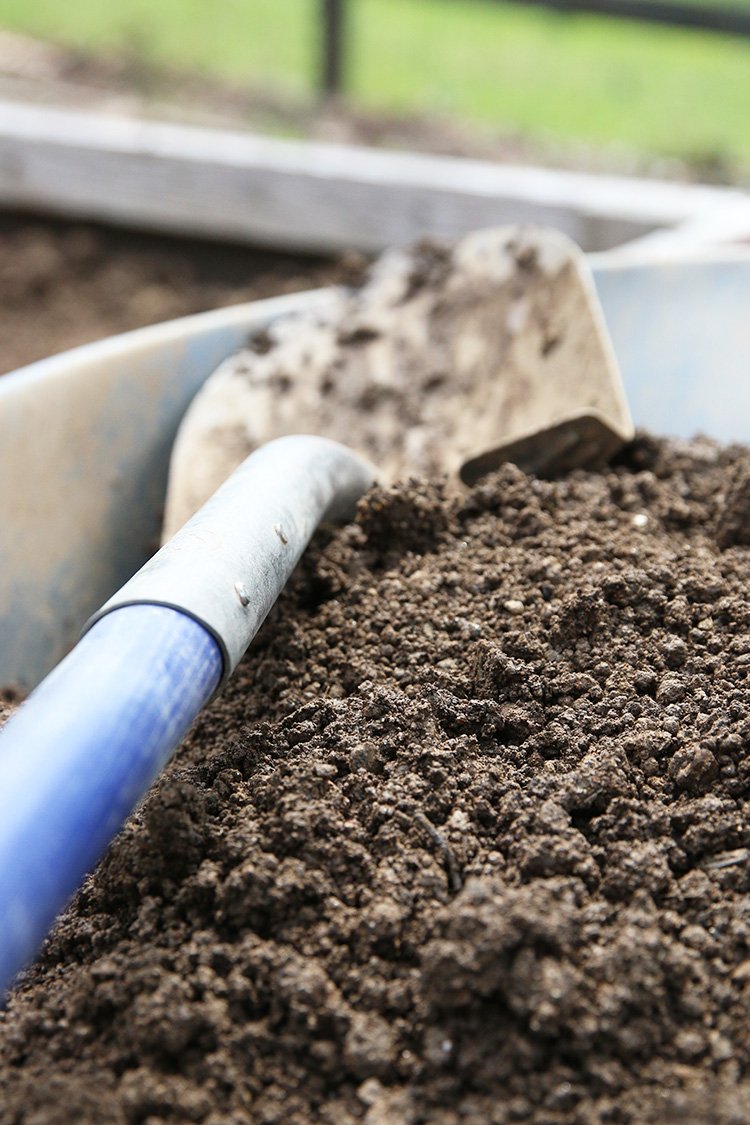How To Freeze Fruit To Reduce Food Waste At Home
Ever wonder how frozen fruit at the grocery store doesn’t stick together? Read on to learn how to freeze fruit properly and reduce food waste at home.
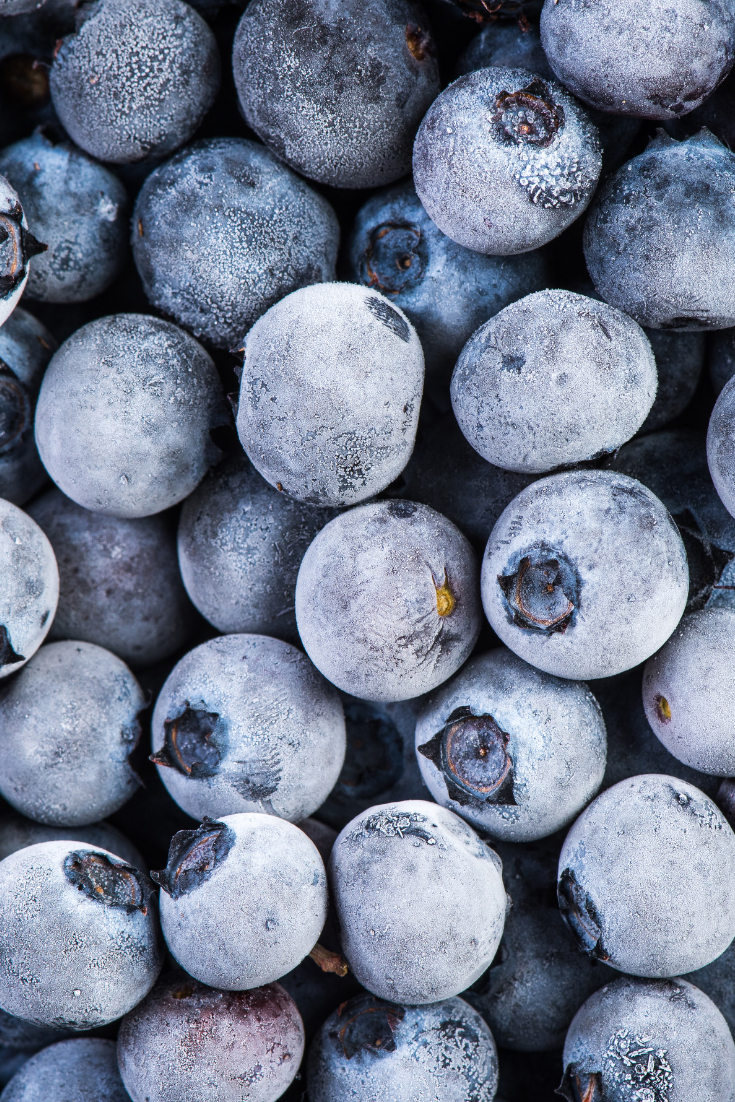
Countless times I’ve pulled fruit from our fridge on the brink of spoiling. While they were no longer tasty to eat fresh, these fruits had plenty of life left in them for smoothies, baked goods, and more. Diligent about reducing food waste, I used to chop up the lingering produce, store it in a zip-top plastic bag, and place it in the freezer. Without fail, the chopped fruit pieces became a giant glob of frozen fruits I struggled to effectively use up.
Surely, there had to be a better way. After all, frozen fruits at the grocery store remained as individual bite-size pieces despite being frozen for weeks or months on end. Short of purchasing any fancy tools or appliances, I was determined to freeze fruits in individual chunks so I could use them like the products I purchase from the store.
I’m not sure if I stumbled on it on social media or via a search on the internet, but I realized I could simply freeze individual fruit pieces spread out on a baking sheet before storing them in a plastic bag for later use. Many vegetables require blanching before freezing to retain color and quality, so freezing vegetables isn’t quite as easy as freezing fruit. But neither process is difficult, and it’s a surefire way to reduce food waste at home.
Freezing fruit on a baking sheet before packaging it in an airtight container might sound obvious to some, but it was not so obvious to me. And maybe it hasn’t been glaringly obvious to you either.🙂
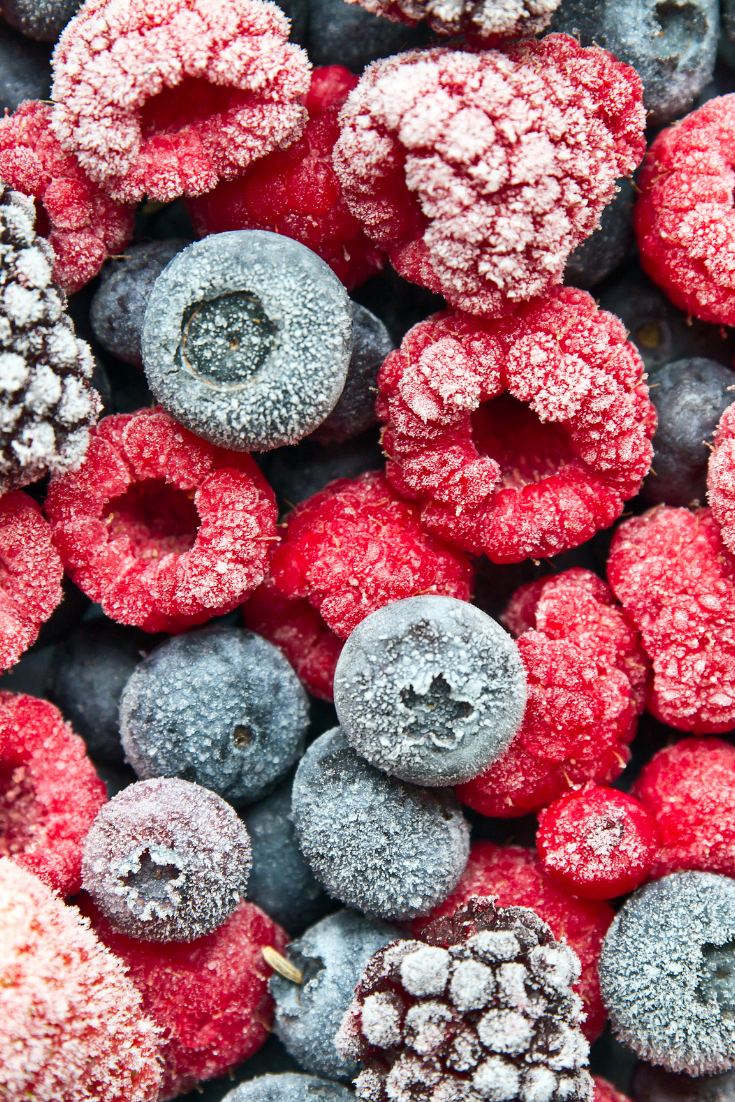
Why Freeze Fruit At Home Instead of Buying Frozen Fruit From The Grocery Store
Freezing fruit at home is a great way to reduce food waste, limit the use of single-use plastics, reduce the carbon footprint of fruit we eat, and support local farmers.
No matter how you buy fresh fruit, freeze fruit before it spoils if you won’t be able to use it before it goes bad. We often have leftover berries, citrus, and other fruit that gets forgotten in our fridge. We scan our fridge for any produce on the brink of spoilage and freeze it so we can use it later. We love making smoothies with frozen fruit (this green smoothie is my favorite), but there are countless ways to use frozen fruit like pies, jams, jellies, ice cream, and so much more!
Buying fresh fruit in season, especially if you can purchase it from local farmers, often reduces the amount of single-use plastic used for packaging and also reduces the environmental costs of transporting fruits. Plan a day to pick large quantities of fruit at a farm in your community, if you can. Bring your own containers to carry the fruit home to eliminate the packaging of most grocery-store frozen fruit purchases.
Many fruits travel the globe before landing in grocery store freezers, so they have a pretty hefty carbon footprint. We can greatly reduce transportation emissions when we purchase local, seasonal fruit from farmers in our own communities. Supporting local farmers, of course, is also great for the local economy.
After you bring home your array of local fruit, freeze it in reusable bags or containers to last you many months. Most frozen fruit lasts at least three months and sometimes many months more, depending on the type of fruit and how you store it.
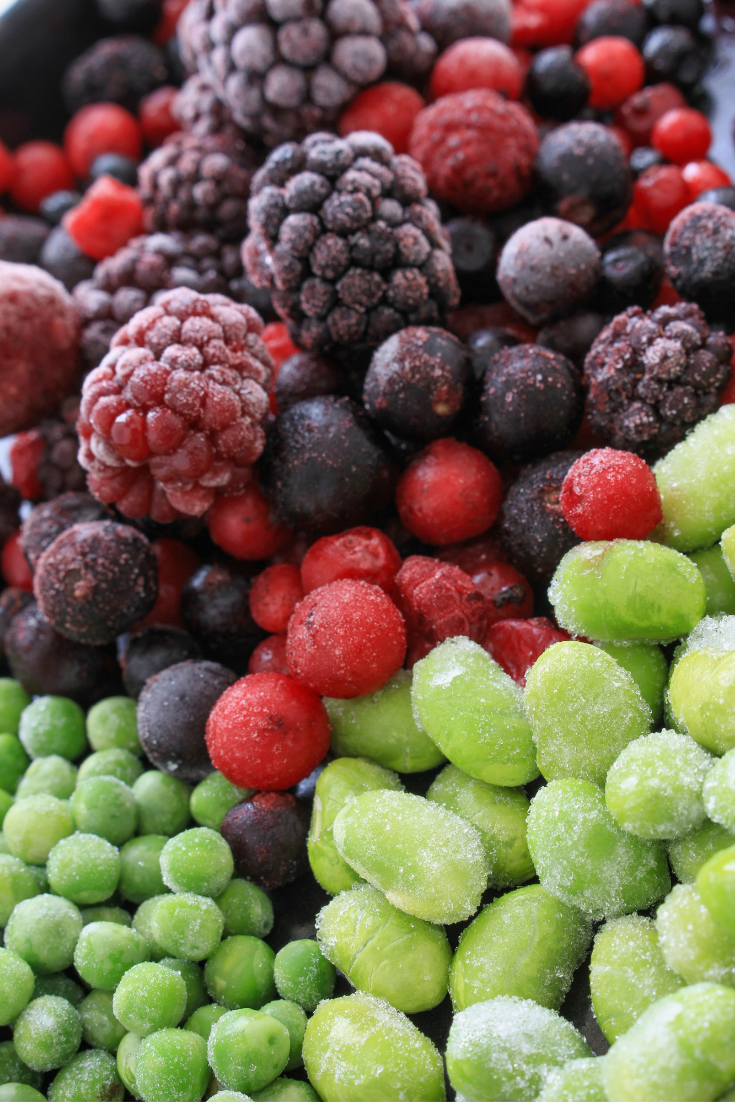
How To Freeze Fruit At Home
Let’s go over a few tips to effectively freeze fruit at home, so you don’t end up with a giant glob of fruit chunks like I did. Follow these simple instructions and make the most of the food you bring into your kitchen and reduce food waste at home.
Chop Fruit Into Bite-Sized Pieces
Chop your fruit into your desired-size chunks; bite-size pieces often work well for most uses. Certain produce that’s already fairly small like blueberries, grapes, or even strawberries may not require chopping or slicing. We also leave the greens, like strawberries leaves, attached and add them to smoothies. If we add things like spinach and kale to smoothies, strawberry greens will fit right in too!
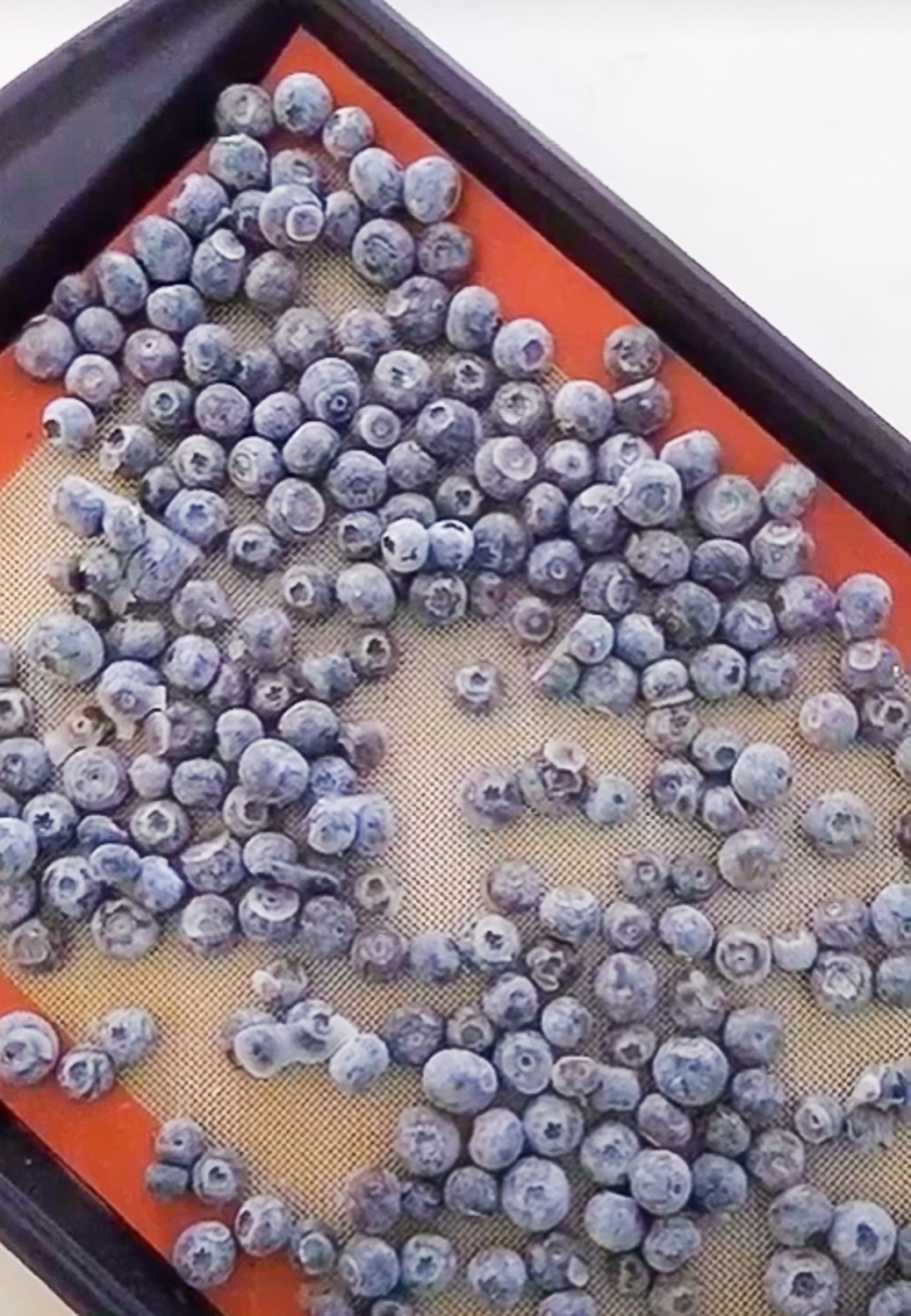
Freeze Individual Pieces on A Baking Tray
Lay a silicone baking mat on a rimmed baking sheet. The silicone baking mat is optional, though I find it’s helpful to reduce the amount of produce that sticks to the pan.
Some people choose to use a layer of parchment paper instead of a silicone baking mat. It works, but it’s an extra piece of single-use waste that I don’t think is really necessary. Do what works for you.
Spread the fruit pieces on the baking sheet in a single layer. To the extent you have space, limit the amount of contact between the pieces of produce so they don’t freeze together. However, don’t worry about being too precise. Pieces that are slightly touching can be pulled apart after freezing.
Freeze Fruit For Several Hours
Set the baking tray of chopped produce in the freezer for several hours or until the pieces are completely frozen.
Once it’s frozen, remove the fruit pieces from the baking sheet and store them in an airtight container. I prefer to use gallon-size plastic zip-top bags because they are flexible and minimize storage space. I wash and reuse them many times until they break down. It’s only single-use if you use it once after all.
If your produce sticks a bit to the silicone baking mat or the baking sheet, scrape it from the pan with the back of a spatula. This works quite well for me.
When you store the frozen fruit, squeeze out as much air as possible from the bag before snapping it shut and placing it in the freezer. The less air in the container or bag, the longer the frozen fruit will stay fresh in the freezer.
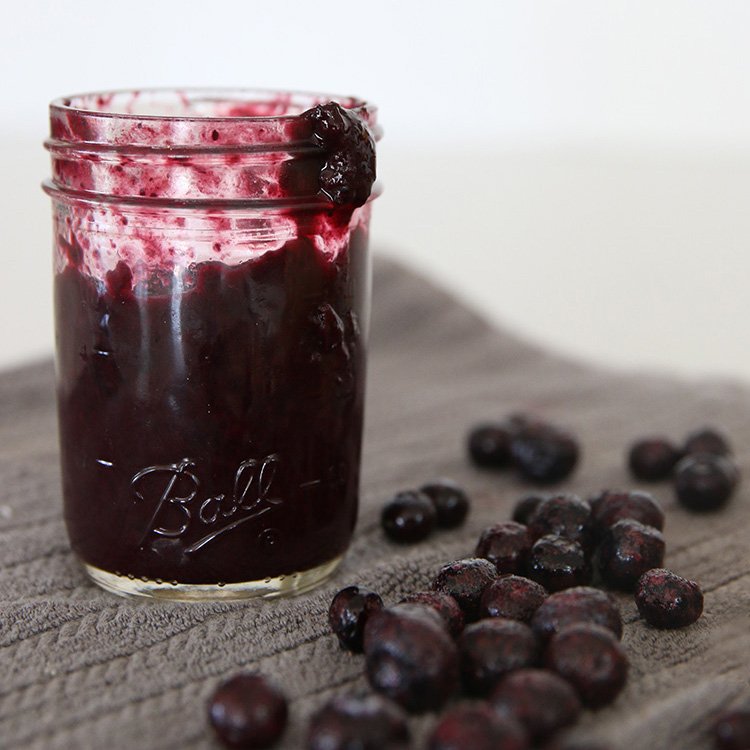
Freeze Produce to Reduce Food Waste
Freezing fruits and vegetables is a great way to extend the life of these Foods. Especially when they’re fresh, fruits and vegetables can spoil quite quickly. Given that most households waste about a third or more of the food they purchase, it’s evident we let far too much produce go to waste.
Save yourself lots of money freezing fruit for a later date. We love smoothies, homemade popsicles, homemade jams, baked goods, and so many other things that are perfect uses for all the frozen produce we save from the compost bin.
I’d love to hear your favorite recipes for using frozen fruits in your house. Share them in the comments so we can all try them out.
If You Like How To Freeze Fruit At Home, You Might Also Like
How And Why To Do a Food Waste Audit
Simple Tips To Reduce Food Waste With Kids
How To Use Pinterest To Reduce Food Waste
